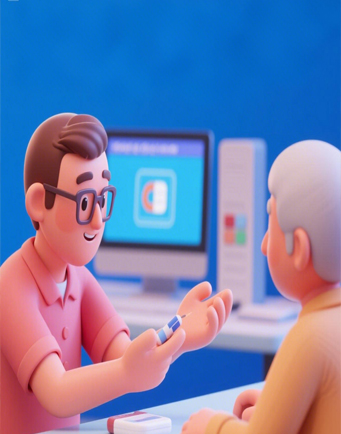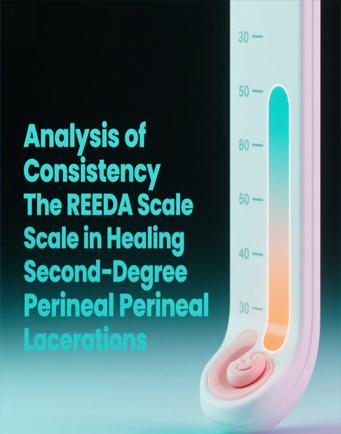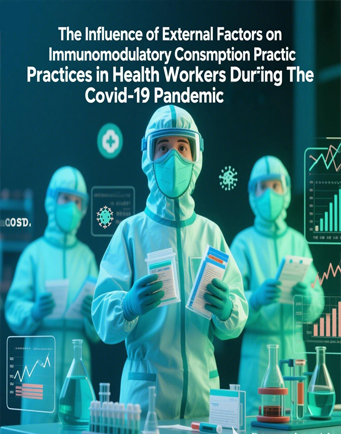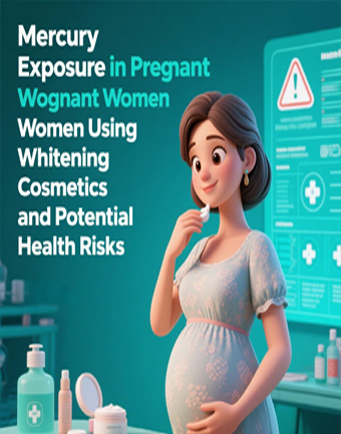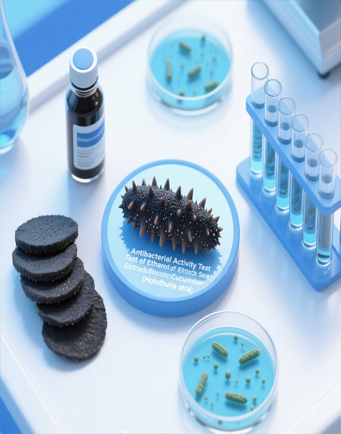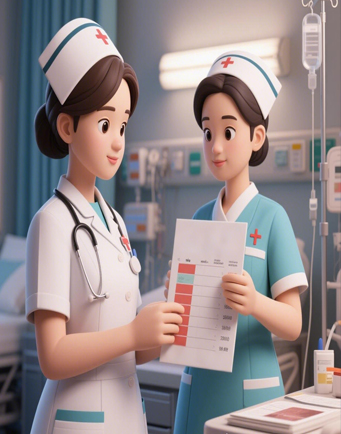Relationship between Procalcitonin Levels (PCT) and Disease Severity in Hospitalized Patients Confirmed Positive for COVID-19
Downloads
Coronavirus Disease 2019 (COVID-19) is an infectious disease caused by Severe Acute Respiratory Syndrome Coronavirus 2 (SARS-CoV-2). This disease attacks the respiratory tract and spreads rapidly almost throughout the world, hence, WHO has declared COVID-19 as a global pandemic. The presence of inflammation and bacterial co-infection in COVID-19 hospitalized patients can increase procalcitonin (PCT) levels as a biomarker of inflammation. Elevated PCT levels are also associated with disease severity. The objective of this study is to determine the relationship between PCT levels and disease severity in hospitalized patients who are confirmed positive for COVID-19. This research method is analytic observational with cross sectional design. The sample is in the form of medical record data for 180 COVID-19 patients who are hospitalized at Bhayangkara Tk. I Raden Said Sukanto Hospital, Jakarta for the period July-December 2020. The relationship between PCT levels and disease severity was statistically analyzed using the Chi Square test. The results of this study were 109 (60.6%) men and 71 (39.4%) women with the highest age group being 46-59 years. The average PCT level was 10.38 ng/mL with the lowest level of 0.01 ng/mL and the highest level of 282.00 ng/mL. PCT levels <0.5 ng/mL were discovered in 111 patients (61.7%) and PCT levels 0.5 ng/mL in 69 patients (38.3%). The severity of disease in mild-moderate illness was 87 patients (48.4%), severe was 35 patients (19.4%), and critical was 58 patients (32.2%). The Chi Square test showed that there was a relationship between PCT levels and disease severity in COVID-19 patients (p = 0.000). The higher the PCT level, the higher the severity of the disease, thus, PCT can be used as an indicator to see the severity of the disease.
Ahmed, S., Jafri, L., Hoodbhoy, Z., & Siddiqui, I. (2021). Prognostic Value of Serum Procalcitonin in COVID-19 Patients: A Systematic Review. Indian Journal of Critical Care Medicine, 25(1), 77. https://doi.org/10.5005/jp-journals-10071-23706
Cai, H. (2020). Sex difference and smoking predisposition in patients with COVID-19. The Lancet Respiratory Medicine, 8(4), e20. https://doi.org/10.1016/S2213-2600(20)30117-X
Cecconi, M., Piovani, D., Brunetta, E., Aghemo, A., Greco, M., Ciccarelli, M., Vespa, E. (2020). Early predictors of clinical deterioration in a cohort of 239 patients hospitalized for Covid-19 infection in Lombardy, Italy. Journal of Clinical Medicine, 9(5), 1548. https://doi.org/10.3390/jcm9051548
Chen, G., Wu, D. I., Guo, W., Cao, Y., Huang, D., Wang, H., ... & Ning, Q. (2020). Clinical and immunological features of severe and moderate coronavirus disease 2019. Journal of Clinical Investigation, 130(5), 2620–2629. https://doi.org/10.1172/JCI137244
Chen, R., Sang, L., Jiang, M., Yang, Z., Jia, N., Fu, W., ... & Zhong, N. (2020). Longitudinal hematologic and immunologic variations associated with the progression of COVID-19 patients in China. Journal of Allergy and Clinical Immunology, 146(1), 89-100. https://doi.org/10.1016/j.jaci.2020.05.003
Chen, T., Wu, D., Chen, H., Yan, W., Yang, D., Chen, G., Ning, Q. (2020). Clinical Characteristics of 113 Deceased Patients with Coronavirus Disease 2019: Retrospective Study. BMJ, 368, 1–12. https://doi.org/https://doi.org/10.1136/bmj.m1091
Cleland, D. A., & Eranki, A. P. (2020). Procalcitonin. Florida: StatPearls Publishing.
Das, B. (2020). A race against time: Chasing procalcitonin biomarker in early sepsis diagnosis and prognosis of COVID-19 patients. Express Healthcare. Retrieved from https://www.expresshealthcare.in/covid19-updates/a-race-against-time-chasing-procalcitonin-biomarker-in-early-sepsis-diagnosis-and-prognosis-of-covid-19-patients/424660/
Dolci, A., Robbiano, C., Aloisio, E., Chibireva, M., Serafini, L., Falvella, F. S., ... & Panteghini, M.. (2020). Searching for a role of procalcitonin determination in COVID-19: a study on a selected cohort of hospitalized patients. Clinical Chemistry and Laboratory Medicine (CCLM), 59(2), 433–440. https://doi.org/10.1515/cclm-2020-1361
Elshazli, R. M., Toraih, E. A., Elgaml, A., El-Mowafy, M., El-Mesery, M., Amin, M. N., ... & Kandil, E. (2020). Diagnostic and prognostic value of hematological and immunological markers in COVID-19 infection: A meta-analysis of 6320 patients. PloS One, 15(8), 1–20. https://doi.org/10.1371/journal.pone.0238160
Fang, L., Karakiulakis, G. and Roth, M. (2020). Are patients with hypertension and diabetes mellitus at increased risk for COVID-19 infection? The Lancet Respiratory Medicine, 8(4), e21. https://doi.org/10.1016/S2213-2600(20)30116-8
Gregoriano, C., Koch, D., Haubitz, S., Conen, A., Fux, C. A., Mueller, B., ... & Schuetz, P. (2020). Characteristics, predictors and outcomes among 99 patients hospitalised with COVID-19 in a tertiary care centre in Switzerland: an observational analysis. Swiss Medical Weekly, 150, w20316. https://doi.org/10.4414/smw.2020.20316
Hu, R., Han, C., Pei, S., Yin, M., & Chen, X. (2020). Procalcitonin levels in COVID-19 patients. International Journal of Antimicrobial Agents, 56(2), 106051. https://doi.org/10.1016/j.ijantimicag.2020.106051
Huang, I., Pranata, R., Lim, M. A., Oehadian, A., & Alisjahbana, B. (2020). C-reactive protein, procalcitonin, D-dimer, and ferritin in severe coronavirus disease-2019: a meta-analysis. Therapeutic Advances in Respiratory Disease, 14, 1–14. https://doi.org/10.1177/1753466620937175
Ji, P., Zhu, J., Zhong, Z., Li, H., Pang, J., Li, B., & Zhang, J. (2020). Association of elevated inflammatory markers and severe COVID-19: A meta-analysis. Medicine, 99(47), e23315. https://doi.org/10.1097/MD.0000000000023315.
Kementerian Kesehatan Republik Indonesia. (2020). Pedoman Pencegahan dan Penanggulangan COVID-19 (Revisi 5). Jakarta: Kementerian Kesehatan Republik Indonesia.
Levani, Y., Prastya, A. D., & Mawaddatunnadila, S. (2021). Coronavirus disease 2019 (COVID-19): patogenesis, manifestasi klinis dan pilihan terapi. Jurnal Kedokteran dan kesehatan, 17(1), 44-57.
Li, C., Zhao, C., Bao, J., Tang, B., Wang, Y., & Gu, B. (2020). Laboratory diagnosis of coronavirus disease-2019 (COVID-19). Clinica Chimica Acta, 510, 35-46. https://doi.org/10.1016/j.cca.2020.06.045
Li, Q., Ling, Y., Zhang, J., Li, W., Zhang, X., Jin, Y., Lu, H. (2020). Clinical characteristics of SARS-CoV-2 infections involving 325 hospitalized patients outside Wuhan. Research Square, 1–15. https://doi.org/10.21203/rs.3.rs-18699/v1
Lippi, G., & Plebani, M. (2020). Procalcitonin in patients with severe coronavirus disease 2019 (COVID-19): a meta-analysis. Clinica Chimica Acta, 505, 190-191. https://doi.org/10.1016/j.cca.2020.03.004
Liu, Z. M., Li, J. P., Wang, S. P., Chen, D. Y., Zeng, W., Chen, S. C., ... & Wu, X. H. (2020). Association of procalcitonin levels with the progression and prognosis of hospitalized patients with COVID-19. International Journal of Medical Sciences, 17(16), 2468-2476. https://doi.org/10.7150/ijms.48396
Luo, X., Xia, H., Yang, W., Wang, B., Guo, T., Xiong, J., Zhou, W. (2020). Characteristics of patients with COVID-19 during epidemic ongoing outbreak in Wuhan, China. MedRxiv. https://doi.org/10.1101/2020.03.19.20033175
Meisner, M. (2014). Update on procalcitonin measurements. Annals of Laboratory Medicine, 34(4), 263-273. https://doi.org/10.3343/alm.2014.34.4.263
Minuljo, T. T., Prima, Y., Anindita, C., Nugroho, H., Seno, H., Gde, T., … Sofro, U. (2020). Karakteristik dan Keluaran Pasien COVID-19 dengan DM di RS Umum Pusat Dr . Kariadi. Medica Hospitalia, 7(1A), 150–158. https://doi.org/10.36408/mhjcm.v7i1A.473
Peckham, H., de Gruijter, N. M., Raine, C., Radziszewska, A., Ciurtin, C., Wedderburn, L. R., … Deakin, C. T. (2020). Male sex identified by global COVID-19 meta-analysis as a risk factor for death and ITU admission. Nature Communications, 11(1), 6317. https://doi.org/10.1038/s41467-020-19741-6
Ponti, G., Maccaferri, M., Ruini, C., Tomasi, A., & Ozben, T. (2020). Biomarkers associated with COVID-19 disease progression. Critical Reviews in Clinical Laboratory Sciences, 57(6), 389–399. https://doi.org/10.1080/10408363.2020.1770685
Satuan Gugus Tugas COVID-19. (2021). Data COVID-19 Indonesia. Jakarta: Satuan Gugus Tugas COVID-19.
Schuetz, P. (2020). The role of procalcitonin for risk assessment and treatment of COVID-19 Patients. Health Management, 20(5), 380-382.
Shah, V. (2020). Meaning of Elevated Procalcitonin Unclear in COVID-19. Boston: Division of Pulmonary and Critical Care Medicine, Massachusetts General Hospital.
Soeroto, A. Y., Santoso, P., Pranggono, E. H., Kulsum, I. D., Suryadinata, H,… & Raditya, F. (2020). Kompendium Diagnostik dan Pengobatan COVID-19 (INTERIM), Perhimpunan Respiralogi Indonesia (PERPARI). Indonesian Journal of CHEST: Critical and Emergency Medicine, 7(1), 17-59.
Susilo, A., Rumende, C. M., Pitoyo, C. W., Santoso, W. D., Yulianti, M., Herikurniawan, H., ... & Yunihastuti, E. (2020). Coronavirus disease 2019: Tinjauan literatur terkini. Jurnal penyakit dalam Indonesia, 7(1), 45-67. http://dx.doi.org/10.7454/jpdi.v7i1.415
Tomo, S., Karli, S., Dharmalingam, K., Yadav, D., & Sharma, P. (2020). The clinical laboratory: a key player in diagnosis and management of COVID-19. EJIFCC, 31(4), 326-346.
Wang, D., Hu, B., Hu, C., Zhu, F., Liu, X., Zhang, J., … Xiong, Y. (2020). Clinical characteristics of 138 hospitalized patients with 2019 novel coronavirus–infected pneumonia in Wuhan, China. Jama, 323(11), 1061–1069. https://doi.org/10.1001/jama.2020.1585
WHO. (2020a). Corona Virus Disease (COVID-19). Geneva: World Health Organization.
WHO.(2020b).Tes Diagnostik untuk SARS-CoV-2. Geneva: World Health Organization.
WHO. (2021). Corona Virus Disease (COVID-19). World Health Organization.
Xu, J. B., Xu, C., Zhang, R. B., Wu, M., Pan, C. K., Li, X. J., ... & Zhu, S. (2020). Associations of procalcitonin, C-reaction protein and neutrophil-to-lymphocyte ratio with mortality in hospitalized COVID-19 patients in China. Scientific reports, 10(1), 1-10. https://doi.org/10.1038/s41598-020-72164-7
Copyright (c) 2022 JURNAL INFO KESEHATAN

This work is licensed under a Creative Commons Attribution-NonCommercial-ShareAlike 4.0 International License.
Copyright notice
Ownership of copyright
The copyright in this website and the material on this website (including without limitation the text, computer code, artwork, photographs, images, music, audio material, video material and audio-visual material on this website) is owned by JURNAL INFO KESEHATAN and its licensors.
Copyright license
JURNAL INFO KESEHATAN grants to you a worldwide non-exclusive royalty-free revocable license to:
- view this website and the material on this website on a computer or mobile device via a web browser;
- copy and store this website and the material on this website in your web browser cache memory; and
- print pages from this website for your use.
- All articles published by JURNAL INFO KESEHATAN are licensed under the Creative Commons Attribution 4.0 International License. This permits anyone to copy, redistribute, remix, transmit and adapt the work provided the original work and source is appropriately cited.
JURNAL INFO KESEHATAN does not grant you any other rights in relation to this website or the material on this website. In other words, all other rights are reserved.
For the avoidance of doubt, you must not adapt, edit, change, transform, publish, republish, distribute, redistribute, broadcast, rebroadcast or show or play in public this website or the material on this website (in any form or media) without appropriately and conspicuously citing the original work and source or JURNAL INFO KESEHATAN prior written permission.
Permissions
You may request permission to use the copyright materials on this website by writing to jurnalinfokesehatan@gmail.com.
Enforcement of copyright
JURNAL INFO KESEHATAN takes the protection of its copyright very seriously.
If JURNAL INFO KESEHATAN discovers that you have used its copyright materials in contravention of the license above, JURNAL INFO KESEHATAN may bring legal proceedings against you seeking monetary damages and an injunction to stop you using those materials. You could also be ordered to pay legal costs.
If you become aware of any use of JURNAL INFO KESEHATAN copyright materials that contravenes or may contravene the license above, please report this by email to jurnalinfokesehatan@gmail.com
Infringing material
If you become aware of any material on the website that you believe infringes your or any other person's copyright, please report this by email to jurnalinfokesehatan@gmail.com.


